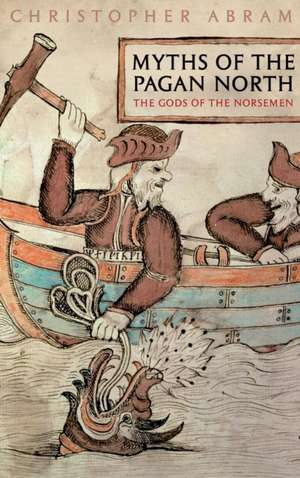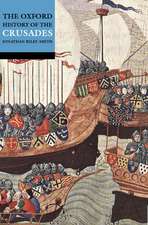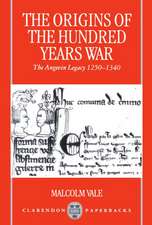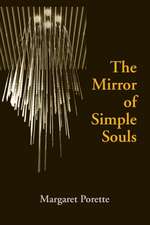Myths of the Pagan North: The Gods of the Norsemen
Autor Dr Christopher Abramen Limba Engleză Hardback – 2 mar 2011
As the Vikings began to migrate overseas as raiders or settlers in the late eighth century, there is evidence that this new way of life, centred on warfare, commerce and exploration, brought with it a warrior ethos that gradually became codified in the Viking myths, notably in the cult of Odin, the god of war, magic and poetry, and chief god in the Norse pantheon.
The twelfth and thirteenth centuries, when most of Scandinavia had long since been converted to Christianity, form perhaps the most important era in the history of Norse mythology: only at this point were the myths of Thor, Freyr and Odin first recorded in written form. Using archaeological sources to take us further back in time than any written document, the accounts of foreign writers like the Roman historian Tacitus, and the most important repository of stories of the gods, old Norse poetry and the Edda, Christopher Abram leads the reader into the lost world of the Norse gods.
The twelfth and thirteenth centuries, when most of Scandinavia had long since been converted to Christianity, form perhaps the most important era in the history of Norse mythology: only at this point were the myths of Thor, Freyr and Odin first recorded in written form. Using archaeological sources to take us further back in time than any written document, the accounts of foreign writers like the Roman historian Tacitus, and the most important repository of stories of the gods, old Norse poetry and the Edda, Christopher Abram leads the reader into the lost world of the Norse gods.
Preț: 228.86 lei
Preț vechi: 350.36 lei
-35% Nou
Puncte Express: 343
Preț estimativ în valută:
43.79€ • 46.83$ • 36.51£
43.79€ • 46.83$ • 36.51£
Carte tipărită la comandă
Livrare economică 18 aprilie-02 mai
Preluare comenzi: 021 569.72.76
Specificații
ISBN-13: 9781847252470
ISBN-10: 1847252478
Pagini: 272
Ilustrații: 10
Dimensiuni: 156 x 234 x 23 mm
Greutate: 0.57 kg
Ediția:New.
Editura: Bloomsbury Publishing
Colecția Continuum
Locul publicării:London, United Kingdom
ISBN-10: 1847252478
Pagini: 272
Ilustrații: 10
Dimensiuni: 156 x 234 x 23 mm
Greutate: 0.57 kg
Ediția:New.
Editura: Bloomsbury Publishing
Colecția Continuum
Locul publicării:London, United Kingdom
Caracteristici
Unravels the cults of fertility, death and war that shaped the Norse myths.
Notă biografică
Christopher Abram is Lecturer in Medieval Scandinavian Studies at University College, London where he teaches Old Norse mythology, literature and language. He has published scholarly articles on eddic poetry and is working on a volume about the transmission of the Icelandic eddas.
Cuprins
Introduction / 1. The Sources of Norse Mythology / 2. The Gods on the Ground / 3. Myths in the Viking Age / 4. The Twilight of the Gods / 5. Pagan Myths under Conversion / 6. The Rebirth of Norse Mythology
Recenzii
'Undoubtedly a learned, informative and enjoyable account of the Norse myths that presents a new model for future discussion.'
'The most innovative aspect of Abram's account is the emphasis he places on skaldic verse, particularly in his chapters dealing with the Viking Age and the conversion period. Though it would be easy to dismiss this poetry as no more ancient than the high medieval sources in which it is preserved, Abram takes the more challenging line that some of it is indeed originally from the pagan period and very successfully teases all kinds of new insights from it. He does this by paying much closer attention to the contexts and detail of this poetry than previous commentators... this is undoubtedly a learned, informative and enjoyable account of the Norse myths that presents a new model for future discussion.'
[a] valuable introduction to the subject.
Almost all of the scholars from whom we have learnt about Norse mythology were synthesisers, carefully combining fragmentary evidence from different regions, periods, and genres to build up as coherent a composite picture as possible... Dr Abram takes the opposite approach, isolating each individual instance of a myth's occurrence, discussing it as an entity in its own right, and relating it to whatever can be discovered of its social and historical context - and indeed, in the case of skaldic verse, to what is known of its author and the patron for whom he wrote... However much we already know and love Norse myths, Dr Abram's book will add a vivid new awareness of the human processes that created and preserved them.
'The most innovative aspect of Abram's account is the emphasis he places on skaldic verse, particularly in his chapters dealing with the Viking Age and the conversion period. Though it would be easy to dismiss this poetry as no more ancient than the high medieval sources in which it is preserved, Abram takes the more challenging line that some of it is indeed originally from the pagan period and very successfully teases all kinds of new insights from it. He does this by paying much closer attention to the contexts and detail of this poetry than previous commentators... this is undoubtedly a learned, informative and enjoyable account of the Norse myths that presents a new model for future discussion.'
[a] valuable introduction to the subject.
Almost all of the scholars from whom we have learnt about Norse mythology were synthesisers, carefully combining fragmentary evidence from different regions, periods, and genres to build up as coherent a composite picture as possible... Dr Abram takes the opposite approach, isolating each individual instance of a myth's occurrence, discussing it as an entity in its own right, and relating it to whatever can be discovered of its social and historical context - and indeed, in the case of skaldic verse, to what is known of its author and the patron for whom he wrote... However much we already know and love Norse myths, Dr Abram's book will add a vivid new awareness of the human processes that created and preserved them.

















